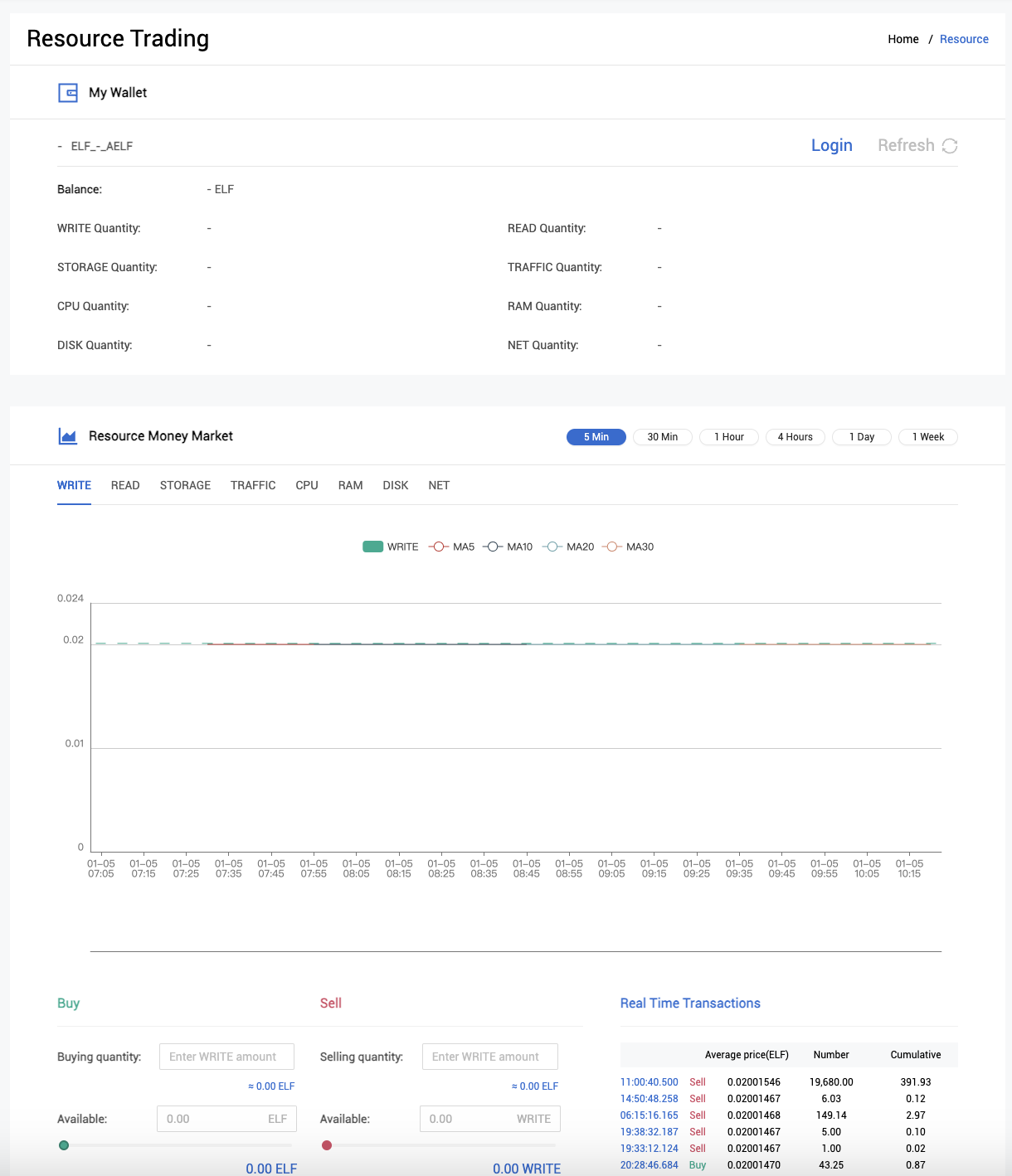aelf Block Explorer
1. Introduction
The AElf blockchain explorer serves as a primary tool for monitoring and searching information on the main chain and its side chains. Through the AElf blockchain explorer, users can:
- View basic data such as transactions per minute, block height, total transactions, total accounts, application quantity, side chain quantity, and more.
- Query specific information related to block height, transaction ID, and addresses.
- Contribute to the development of the aelf ecosystem by participating in activities like node elections, resource purchases, and contract viewing.
- Mainnet: https://explorer.aelf.io/
- Testnet: https://explorer-test.aelf.io/
2. Using the Explorer
1. View the overall status of the AElf blockchain.
On the homepage, the first section displays essential data, including ELF current price, total transaction counts, governance rewards, last block number, total account counts, and voter basic rewards. Below this section, real-time data on the AElf ecosystem's operation can be found, such as the latest blocks, latest transactions, and transactions per minute.
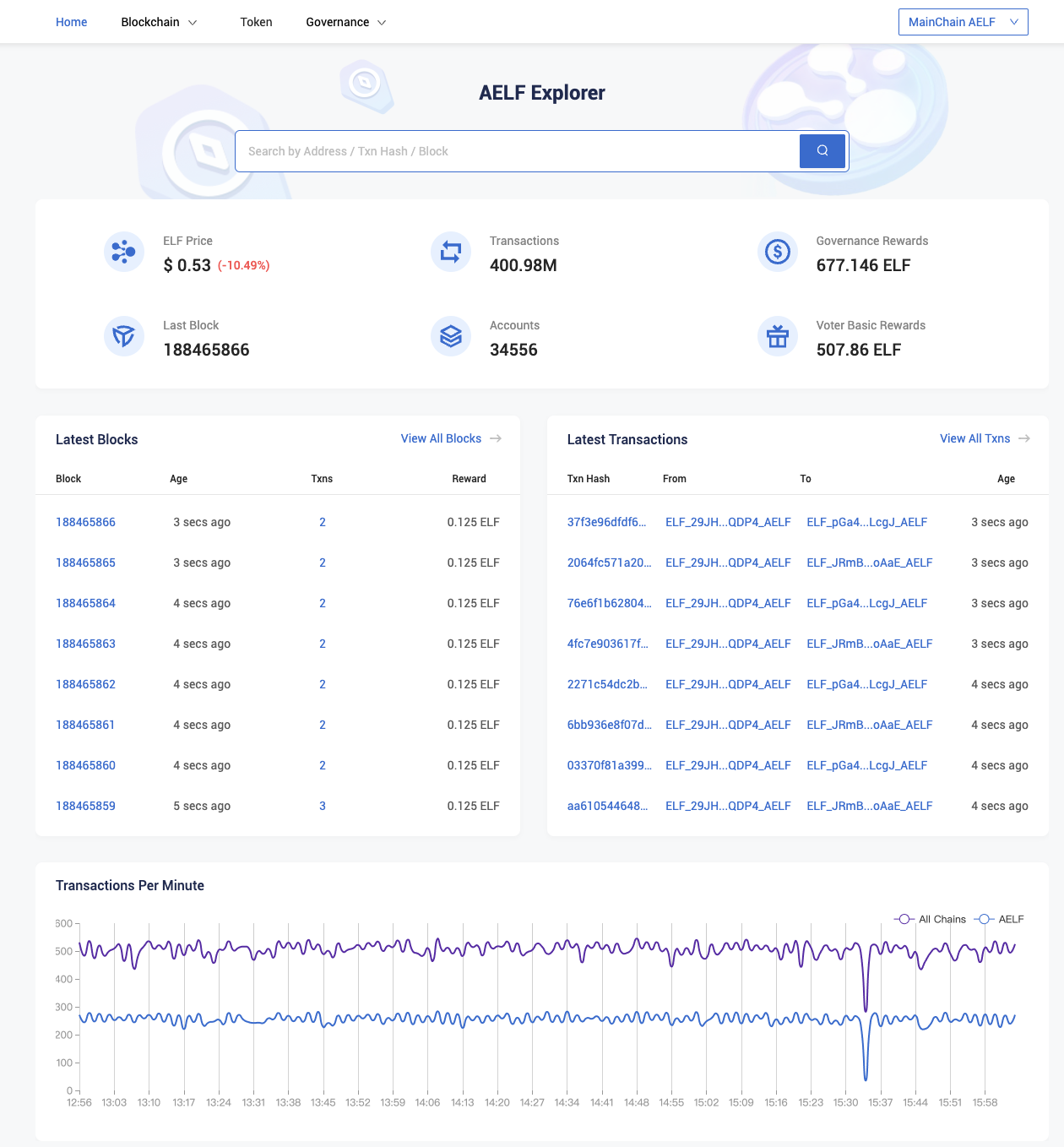
2. Viewing information on the AElf chain
In the top-left menu bar, there are four options. Under the second option 'blockchain,' there are three sub-options: blocks, transactions, and address. With these three options, you can:
- View information about all blocks on the AElf chain, including who mined the block and the transactions that occurred in that block.
- Explore each transaction that occurred on the AElf chain, including the sender and receiver addresses, as well as the method called in the transaction.
- See the top 1000 wallet addresses with the most ELF tokens on the AElf chain, along with all contracts deployed on the AElf chain.

3. Viewing token symbols on AElf chain
In the top-left menu bar, there are four options. Clicking on the third option 'token' will display all token symbols on the AElf chain, including symbols for both FT (Fungible Tokens) and NFT (Non-Fungible Tokens).
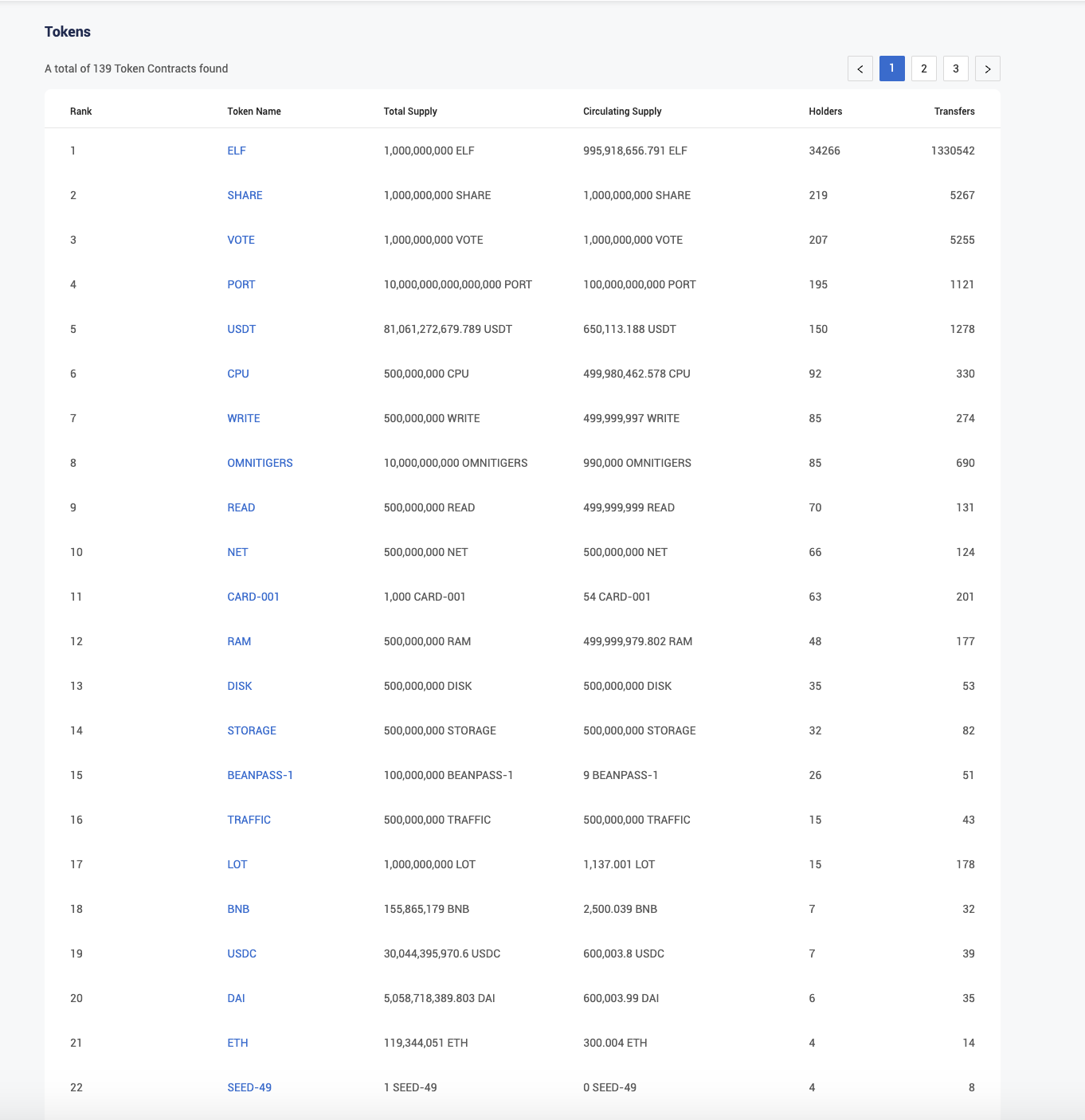
4. Viewing Governance on AElf chain
In the top-left menu bar, there are four options. Clicking on the fourth option 'governance' reveals three sub-options: proposal, vote, and resource.
Proposal
Users can actively engage in on-chain governance by using the AElf blockchain explorer to view, initiate proposals, and establish their own organizations. Initiating proposals and creating organizations require logging in using a browser plugin.
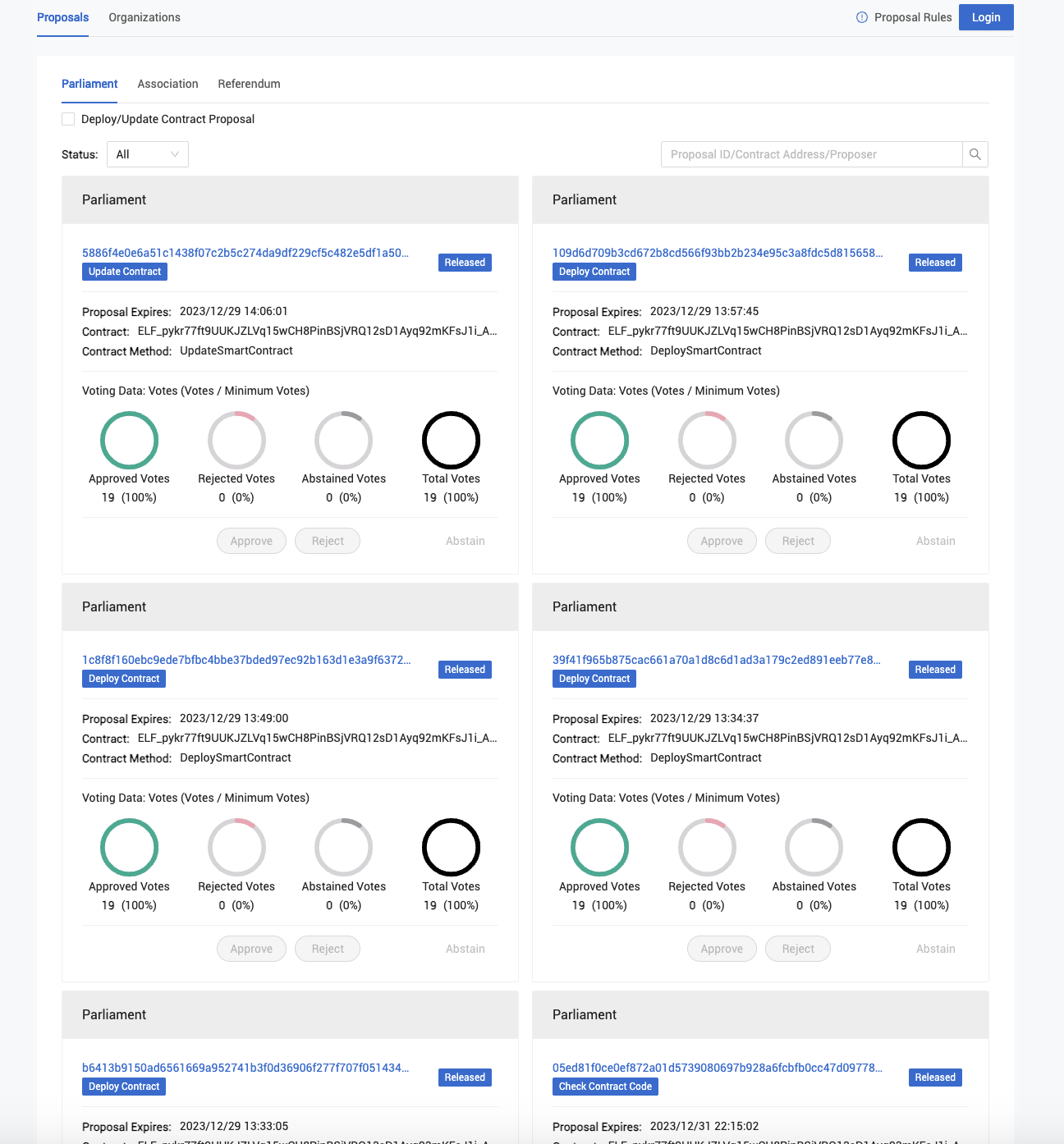
Vote
Users can apply to become a candidate node and vote for nodes through the AElf blockchain explorer. The scenario-based operations in the AElf blockchain explorer are as follows:
(1) Applying to Become a Candidate Node
A node operator wants their node to become a production node on AElf, participate in block production, and maintain the orderly operation of the entire AElf ecosystem. At this point, the node owner needs to apply for their node to become a production node on the aelf blockchain. This can be done using the AElf blockchain explorer.
Node Application Steps:
- Users open the AElf blockchain explorer and log in to the AElf browser plugin.
- After entering the voting module, Users learn about the requirements and voting rules for applying for a node through the node election plan and stake 100,000 ELF.
- Users fill in the node information and complete the application through the plugin authorization, becoming a candidate node.
Becoming a Production Node:
- When voters vote for the user and he ranks in the top 17 (17 production nodes in the first year, increasing by 2 each year thereafter), the user becomes a production node.
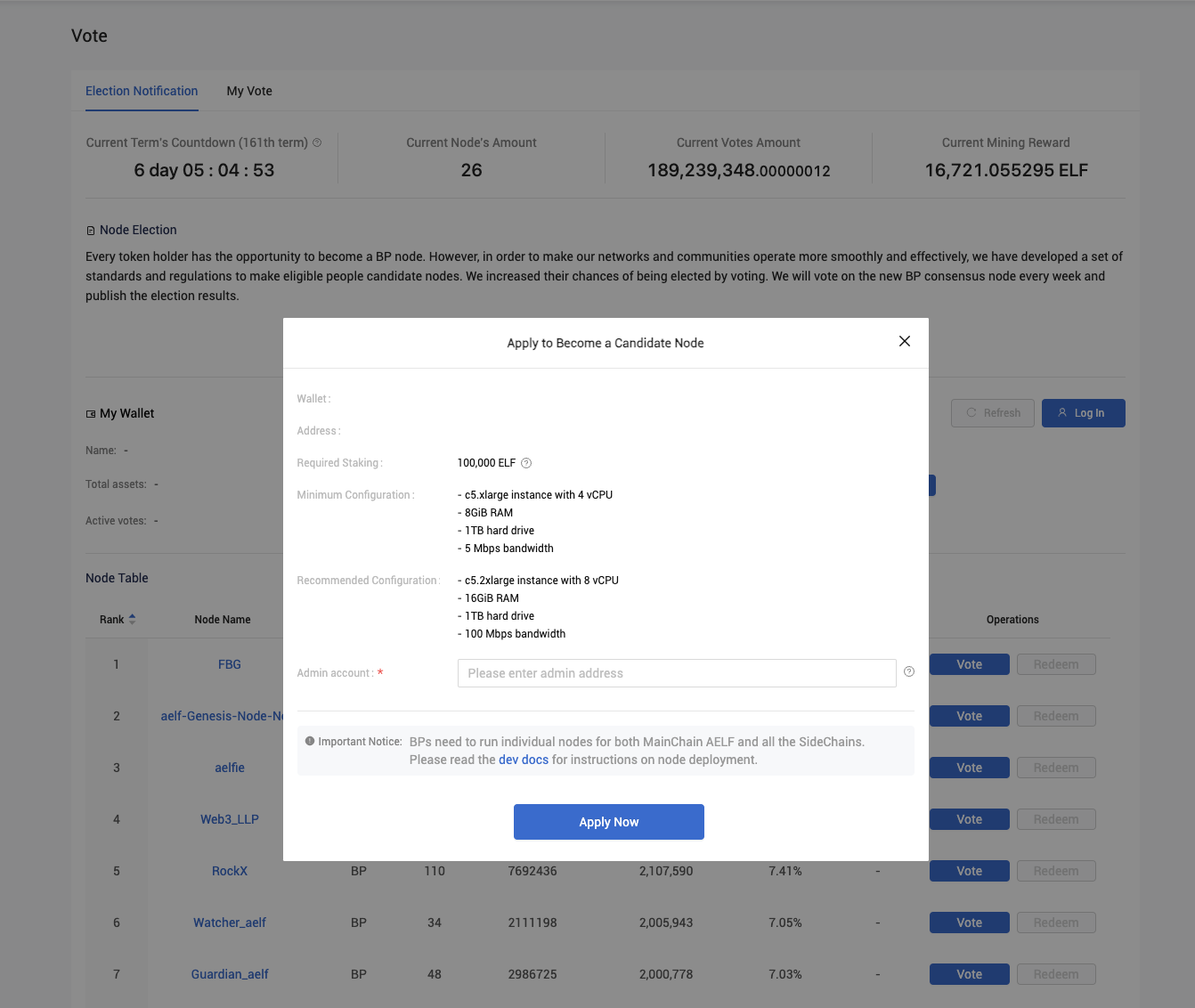
(2) Voting for Nodes
Users want to vote for a node on AElf, collaborating with other users to select outstanding production nodes. Users need to vote on the AElf blockchain explorer.
Voting Steps:
- Users open the AElf blockchain explorer and log in to the AElf browser plugin.
- After entering the voting module, users learn about the voting rules through the node election plan. They review the information of various nodes in the node list and select one to vote for.
Voting Operations:
- Users can choose to vote from their wallets or transfer votes from previously cast votes.
- If voting from the wallet, users need to specify the number of votes, select the lock-up period, and, after plugin authorization, complete the voting process.
- If transferring votes, users need to choose a previous voting transaction, and after plugin authorization, the vote transfer is completed.
(3) Redeeming Votes
Users want to redeem the vote they previously cast. They need to redeem votes on the AElf blockchain explorer.
Redemption Steps:
- Users open the AElf blockchain explorer and log in to the AElf browser plugin.
- After entering the voting module, users select a node with redeemable votes.
Redemption Operations:
- Users choose a specific voting transaction that can be redeemed.
- After plugin authorization, users complete the redemption process.
Resources
Users can buy and sell resource tokens required for on-chain governance through the AElf blockchain explorer. Resource tokens include CPU, RAM, DISK, NET, READ, WRITE, STORAGE, and TRAFFIC. The following is a scenario demonstrating the process in the AElf blockchain explorer.
- The user, who has developed his own application, to ensure the smooth operation of the application, needs to purchase
- various resource tokens through the AElf blockchain explorer.
Buying Resource Tokens:
- Users open the AElf blockchain explorer and log in to the AElf browser plugin.
- After entering the resource purchase module, users can select CPU resources, enter the desired quantity, and complete the purchase by authorizing the plugin.
